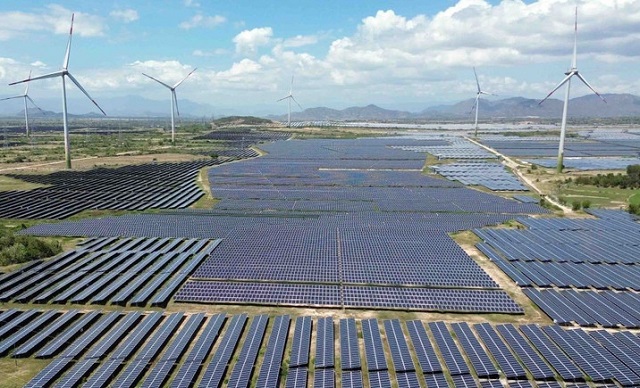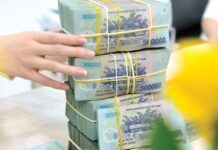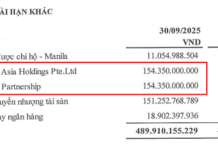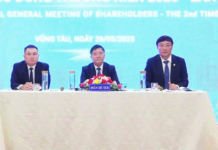
Wind and solar energy project in Bac Phong, Thuan Bac, Ninh Thuan province. (Photo: Tran Viet/ VNA)
|
With financial demands for Vietnam’s energy transition potentially reaching over $135 billion in the 2021-2030 period, according to the World Bank, addressing investment and financial regulatory hurdles becomes crucial to facilitating this green transformation.
Challenges in Energy Finance
Dr. Ngo Tri Long, an economic expert, points out that one of the biggest obstacles to mobilizing financial resources for Vietnam’s energy transition is the electricity pricing mechanism, which does not accurately reflect investment costs, risk levels, and expected profits for private investors, especially strategic investors and international financial institutions.
Specifically, the mechanism for determining the price cap in the bidding process for renewable energy projects, including solar and wind power, relies primarily on domestic calculation frameworks. It does not adequately consider financial risks, borrowing costs, and currency risk mitigation expenses typically faced by foreign investors.
Additionally, the lack of long-term enforceability and risk guarantees in power purchase agreements (PPAs) means that renewable energy projects in Vietnam cannot attain an acceptable credit rating for disbursement.
Consequently, only 15% of renewable energy projects in Vietnam can access long-term foreign currency loans from international financial institutions, mostly thanks to guarantees from development funds (as per the ADB report in 2024). In contrast, most other projects have to borrow in local currency at interest rates 3-5 percentage points higher. Moreover, the ability to attract international green finance is limited and significantly lags behind other regional countries like Thailand and Indonesia.
The second challenge lies in the absence of a comprehensive and centralized legal framework for green finance, including a lack of legislation on carbon markets and emissions pricing. Regulations on green bonds are dispersed and do not strongly encourage issuers, resulting in a meager 0.1% of the total value of corporate bond market issuances being green bonds from 2019 to 2024, compared to 5-6% in ASEAN countries like Thailand, Malaysia, and Singapore (as per the ADB report in 2024).
Furthermore, the mechanism for renewable energy certificates (RECs) lacks clarity, and the absence of a synchronized legal framework causes many Vietnamese businesses to miss out on significant international concessional capital flows, such as the Green Climate Fund (GCF) and the Sustainable Development Goal Fund (SDG Fund), as well as blended finance models.
The third challenge is the gap in state-led capital steering through capable public financial institutions, similar to the successful “Green Reconstruction Bank” model implemented in countries like Germany, South Korea, and the UK.
Meanwhile, establishing a “Green Development Bank” is a strategic move to mitigate investment risks for the private sector, unlock international capital, enhance public capital efficiency, and ensure progress toward realizing the net-zero emission commitment by 2050, as suggested by expert Ngo Tri Long.
Piloting the National Energy Bank Model
At the Annual Oil and Energy Forum 2025, organized by the Vietnam Oil and Gas Association, delegates proposed legalizing green finance, standardizing investment norms for new technologies, and designing flexible power purchase agreements based on regions, technologies, and scales. They emphasized the need for reference prices close to reality and clear offtake mechanisms for key projects. Additionally, they recommended strengthening the state’s coordinating role through public financial institutions and risk guarantee mechanisms for new energy projects.
To address financial bottlenecks, Mr. Nguyen Duc Hien, Deputy Head of the Central Committee on Policy and Strategy, suggested attracting private sector investment in energy transition projects through public-private partnerships. Currently, the total green transition funding from the banking system stands at a meager 4.36%, underscoring the need for a specialized institution.
Mr. Hien emphasized that a conventional approach, as is currently the case, would be challenging due to the pivotal role of interests in attracting private investment. He also pointed to the necessity of reforming the electricity market, the power purchase mechanism, and resolving lingering issues in wholesale and retail.
From a business perspective, a representative of Binh Son Refining and Petrochemical Company proposed developing and perfecting a stable and long-term legal framework for new and critical fields in the energy transition process. These include carbon capture, utilization, and storage (CCUS) technology, carbon credits, sustainable aviation fuel (SAF), and next-generation biofuels.
Additionally, they emphasized the importance of implementing preferential credit policies for green projects investing in clean and carbon-circular technologies to boost the green transition among enterprises.
Moreover, applying tax exemption and reduction policies for green and environmentally friendly investment and production activities is a practical and effective solution to encourage businesses to confidently invest in green projects.
Meanwhile, economic expert Ngo Tri Long proposed piloting the National Energy Bank model amid the surging investment demands for Vietnam’s energy transition, which the current financial system struggles to meet. He also suggested that the Vietnam National Oil and Gas Group (Petrovietnam), as a leading state-owned enterprise in the energy sector, could co-found the National Energy Bank.
In collaboration with major commercial banks such as BIDV, Agribank, and Vietcombank, and with the patronage of the Ministry of Finance and the State Bank, Petrovietnam could establish a specialized financial institution. This bank could focus on providing medium- to long-term credit (15-25 years) for renewable energy, energy storage, green hydrogen, and offshore wind power projects. By partnering with the Petrovietnam Energy Transition Fund, it would create a blended finance ecosystem to support technological innovation.
The National Energy Bank could issue green bonds to attract international capital at preferential interest rates, tap into domestic and foreign carbon market mechanisms, and provide financing to startups and small investors who struggle to access traditional commercial loans, especially in rural and island areas. Additionally, it could share investment risks with the state through a risk guarantee fund, similar to the Green Guarantee Facility (GGF) of the EU.
Indeed, successful models worldwide include KfW in Germany, which has provided over €80 billion in funding for clean energy projects in Europe, with a financial leverage ratio of 1:5. The Green Bank in the UK has attracted over £15 billion from the private sector in just five years, mainly through green bonds and public-private partnerships. Indonesia Infrastructure Finance (IIF) is a development bank jointly established by the Indonesian government and the World Bank/ADB, specializing in long-term energy infrastructure financing.
“The Vietnamese Energy Bank model can draw insights from these institutions but needs to be localized, combining the state’s coordinating role, Petrovietnam’s technical capabilities, and market resources,” suggested Mr. Ngo Tri Long.
Anh Nguyen
– 09:26 19/08/2025
The Alarm Bells Ring: Construction Halted on 3,300m Deep Drilling Project as a Treasure Trove of Hundreds of Billions of Cubic Meters of ‘White Gold’ is Uncovered with Advanced Technology.
The newly discovered treasures, buried deep beneath the earth’s surface at a staggering depth of over 3,300 meters, await their grand unveiling.
“Nuclear Power Pursuit by Petrovietnam: Over $10 Billion Needed, But Which Technology?”
“The greatest challenge that Petrovietnam faced when tasked with the nuclear power project was the massive investment required, totaling over tens of billions of USD. This figure far exceeded the financial capabilities of the enterprise as well as domestic banks, presenting a formidable obstacle to overcome.”
Low-Emission Building Materials: From Lab to Mainstream Market
The construction industry is a major consumer of global energy resources and significantly contributes to CO2 emissions. With the looming climate crisis, the industry is turning to carbon-negative materials as a promising solution to reduce its environmental impact. These innovative materials go beyond merely reducing emissions; they actively absorb and store CO2 from the atmosphere, offering a proactive approach to mitigating the sector’s carbon footprint.












































